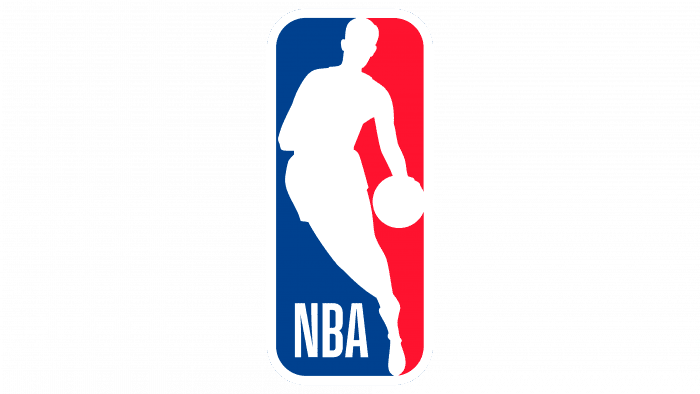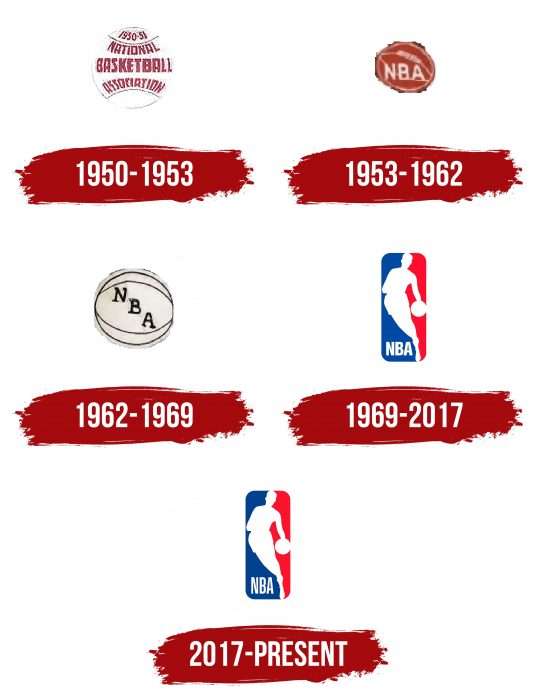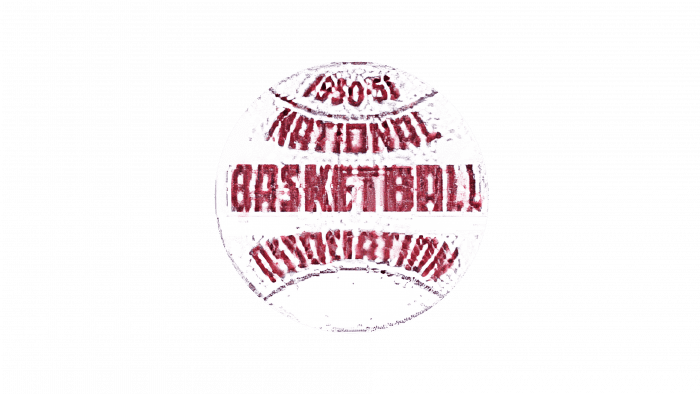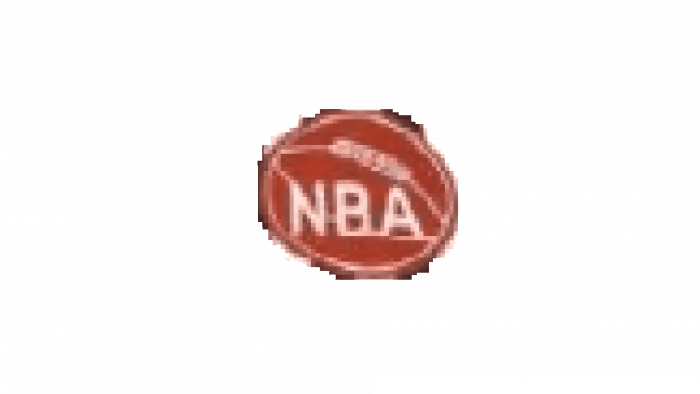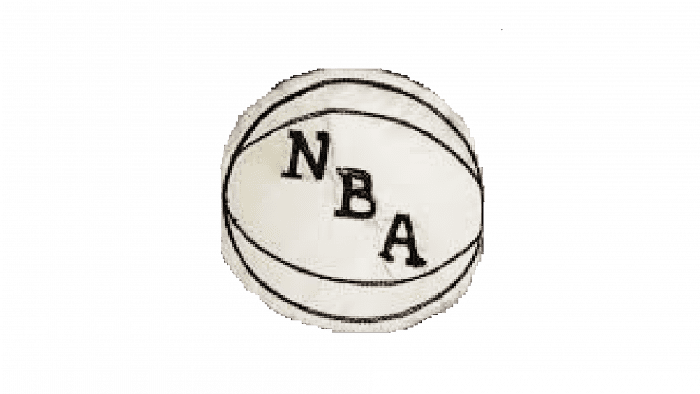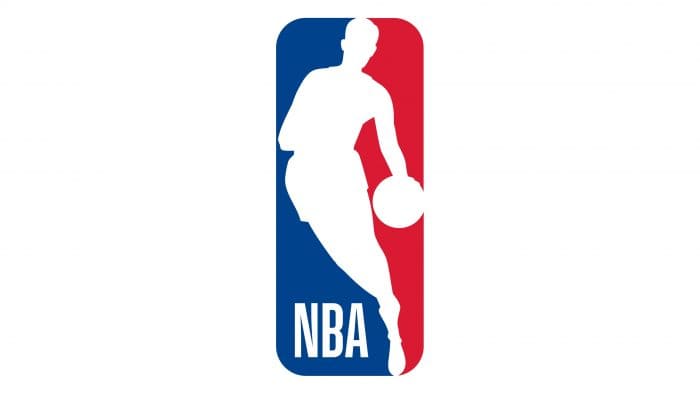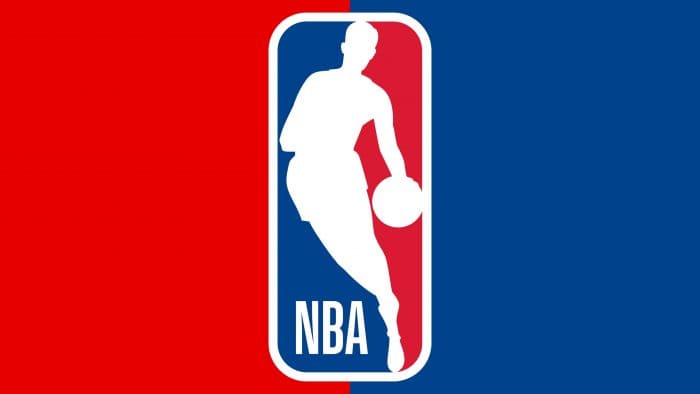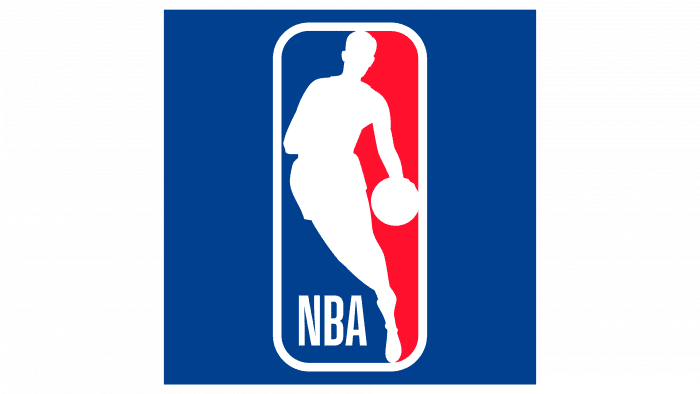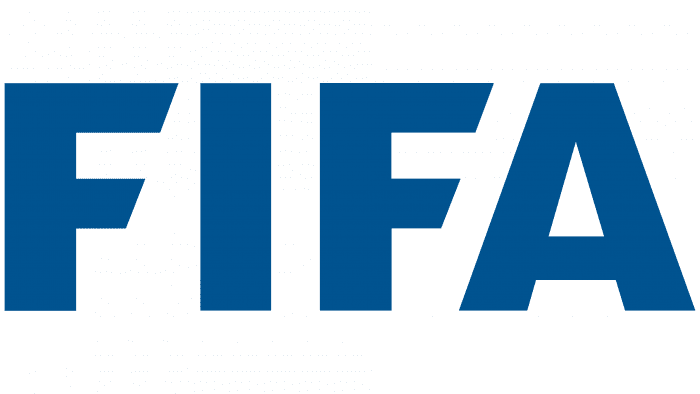“The organization has players who combine a high professional level and a passionate love for basketball,” the NBA logo says. The emblem is full of expression and movement. Promises spectacular performances and virtuoso possession of the ball.
NBA: Brand overview
| Founded: | June 6, 1946 |
| Headquarters: | New York, NY, U.S. |
Meaning and History
The National Basketball Association logo acquired its recognizable style in 1969. Before that, it looked standard: artists periodically put the NBA’s full or abbreviated name on balls of different shapes. But the men’s professional league has had to rethink conservative branding views to compete with the American Basketball Association, which has embarked on a tender war and has attracted many star athletes.
What is NBA?
This is the abbreviation for the National Basketball Association, a men’s basketball league created in 1946. Originally known as The Basketball Association of America, it was renamed after merging with the National Basketball League. The sports organization has 30 teams: one from Canada, the rest from the United States.
1950 – 1953
A series of basketball emblems appeared in 1950, following the renaming of The Basketball Association of America to the National Basketball Association. The first version was dedicated to the 1950-1951 season, as evidenced by the number “1950-51” shown on top. In the center of the white circle, NATIONAL BASKETBALL ASSOCIATION was written in big red letters. The words, divided into three lines, looked unusual: the first curved upward, the second expanded towards the middle, and the third had the shape of an arch.
1953 – 1962
The 1953 redesign did not bring significant changes in terms of concept. Only the colors, proportions, and some elements changed: the ball turned brown and acquired a pronounced oval shape, the long name of the league disappeared, giving way to the abbreviation “NBA.”
1962 – 1969
In 1962, the National Basketball Association introduced a new logo – again white and round, as in 1950. The original version is distinguished by black arched lines crossing the ball and forming two crescents. In the center is the inscription “NBA.” The letters are arranged diagonally from left to right.
1969 – 2017
In the face of unequal competition with the American Basketball Association, the men’s professional league had to undergo a global redesign. While experienced referees and basketball players ran to ABA, the NBA began to lose its athletes and fan support. Ultimately, it was decided to update the brand name to contrast the NBA’s flamboyant personality with ABA’s original play style.
The solution to this problem was entrusted to Alan Siegel, the founder, and CEO of the Siegel + Gale branding company, who once personally oversaw the MLB symbol’s development. As a result of painstaking work, the National Basketball Association has an emblem with the image of a basketball player, a ball, and the inscription “NBA” inside a red and blue rectangle with rounded edges. It debuted in 1971 and remained an integral part of the brand to this day.
2017 – today
In 2017, the designers did the final touch: they changed the abbreviation’s font, making the lines thinner. The rest of the elements are left unchanged. Jerry west NBA logo has become more contrasting and attractive.
NBA: Interesting Facts
The National Basketball Association (NBA) is a major professional basketball league in North America, one of the top men’s sports leagues globally.
- Start: Founded on June 6, 1946, as the Basketball Association of America, it merged with the National Basketball League in 1949 to become today’s NBA, marking a new chapter in professional basketball.
- Global Reach: The NBA has played a key role in popularizing basketball worldwide, with players from across the globe and games broadcast in over 200 countries in more than 40 languages.
- Iconic Players: The league has been home to legends like Michael Jordan, LeBron James, Kobe Bryant, and Shaquille O’Neal, who have become international icons beyond basketball.
- Trailblazing Coach: Bill Russell became the first black head coach in the NBA and any major U.S. sport in 1966, setting a precedent for racial equality in sports leadership.
- Diverse Talent: Today, the NBA boasts about 100 international players from over 40 countries, reflecting the sport’s diversity and global appeal.
- Dominant Teams: The NBA has seen several dynasties, such as the Boston Celtics in the late 1950s to 1960s, the Chicago Bulls in the 1990s, and the San Antonio Spurs from the late 1990s through the 2010s.
- Draft Lottery: Introduced in 1985, the NBA Draft Lottery determines the draft order to prevent teams from losing games intentionally for a better pick, adding randomness to draft selections.
- Game Innovations: The NBA has adopted new technologies and rules, like the shot clock in 1954, to make the game faster and more competitive.
- NBA Cares: This social initiative, started in 2005, tackles social issues of education, youth support, and health and wellness.
- Economic Force: The NBA generates billions annually from broadcasting, merchandise, ticket sales, and sponsorships, significantly impacting its cities’ economies.
From its beginnings to its status as a worldwide sports phenomenon, the NBA’s history is marked by significant achievements, cultural impact, and contributions to society in the U.S. and globally.
Font and Colors
The modern NBA logo, created by Alan Siegel in 1969, is based on a real photo. However, National Basketball Association officials from the early days denied the apparent similarity. After all, according to Siegel, they sought to institutionalize the image, not individualize. The league representatives did not want the corporate symbol to be associated with any particular basketball player; they tried to divert the personality’s focus.
Despite this secrecy, the player on the emblem is easily identifiable. This is the legendary Jerry West of the Lakers, captured during the match by photographer Wen Roberts. True, an athlete can only be recognized by the way he dribbles: the artist deliberately did not go into details, depicting an impersonal white silhouette. As Alan Siegel admitted, he found a reference in a sports magazine and noticed how accurately the picture conveys the game’s dynamism and essence. Jerry West himself admits that his image is used in the logo but considers himself unworthy of such honors.
In the lower-left corner of the emblem is the inscription “NBA.” It’s in a simple sans-serif typeface that vaguely resembles Horrible Jefe Font and Helvetica Pro Black Condensed. The typefase is specially designed for the professional league.
The classic scheme contains white, blue, and red. There is also a black and white print version. It is intended for newspapers, magazines, and other publications if the visual context involves using a monochrome palette.
FAQ
What does the NBA logo mean?
Branding marketer Alan Siegel created the logo, inspired by a photo of Jerry West, a skilled and elegant player. Siegel saw an image of West holding a basketball that captured the essence of basketball: grace, strength, and dynamic movement.
The logo features West in a vertical pose, highlighting these qualities. His poised and athletic silhouette became the brand’s symbol, reflecting basketball’s excitement and skill.
Choosing Jerry West as the model for the logo was significant. West, known for his performance as a guard for the Los Angeles Lakers, brought a historical and personal touch to the brand, connecting it to the legacy of a great player.
Who is the NBA emblem?
The logo features the iconic silhouette of Jerry West, showcasing the sport’s rich history and exceptional talent. West, a former guard for the Los Angeles Lakers, was known for his skill, elegance, and competitive spirit, making him an ideal brand representation.
Branding marketer Alan Siegel created this logo, inspired by a photograph of West in action. Siegel wanted a symbol that captured the essence of basketball. West’s image perfectly embodied grace, strength, and dynamic movement. The silhouette of West with a basketball reflects the athleticism and excitement of the sport.
Choosing Jerry West as the emblem connects the logo to the legacy of one of the NBA’s great players. His presence in the logo honors his contributions to the game. The logo represents excellence, competition, and the pursuit of greatness, which are values the brand upholds.
When did the NBA start using the logo?
The NBA started using the iconic logo with Jerry West’s silhouette 1969. Branding marketer Alan Siegel designed it, inspired by a photograph of West in action. Siegel wanted to capture the essence of basketball, and West’s image showed grace, strength, and dynamic movement.
In 1986, the brand began creating individual logos for the NBA Finals. The original Finals logo stayed the same for ten years before being updated in 1996. Over the years, the Finals logo changed several times. In 2022, the NBA returned a version of the iconic scripted Finals font, blending nostalgia with a modern touch.
The main logo, featuring West’s silhouette, has remained a consistent and recognizable symbol of excellence, competition, and the pursuit of greatness. It continues to inspire fans and players, representing the enduring legacy and spirit of the sport.
Why is Jerry the NBA logo?
Jerry West became the NBA logo because of an exceptional photograph. Designer Alan Siegel, tasked with creating the league’s symbol, reviewed thousands of photos to find the perfect image. He found a photo of West in action that stood out for its grace, strength, and dynamic movement.
Siegel chose this image for its powerful visual impact, not for West’s fame. West’s silhouette, captured in an athletic stance with a basketball, embodied the essence of basketball. The image conveyed the sport’s excitement and physicality in a simple yet powerful way, making the logo one of the most recognizable symbols in sports.
Who is on the NBA logo?
The elongated figure on the NBA logo is a tribute to Jerry West of the LA Lakers. This iconic silhouette comes from a real photo of West in action. Designer Alan Siegel, who created the logo, found this image among thousands of photos and was struck by its grace, strength, and dynamic movement.
Jerry West was an outstanding player known for his skill and competitive spirit. The photo captured him in a way that perfectly represented basketball. Siegel chose this image because it embodied the essence of the sport.
It has become one of the most recognizable symbols in sports. The logo honors Jerry West and captures the spirit of basketball, inspiring players and fans.
Is the NBA changing its logo?
The NBA logo, created by Alan Siegel in 1969, is still used today. This iconic design features the silhouette of Jerry West. Despite Jerry West requesting to be replaced by another athlete and fans calling for the image of the late Kobe Bryant to be used, the league has no plans to change the logo.
Jerry West has expressed his desire to step aside, and the tragic passing of Kobe Bryant led to a significant push from fans to update the logo in his honor. The brand has chosen to keep the current design. The logo has become a timeless symbol of the brand, representing excellence, competition, and the spirit of basketball.
The league recognizes fans’ emotional connection with its players and the logo. The NBA continues to stand by the classic design that has become synonymous with the sport.
